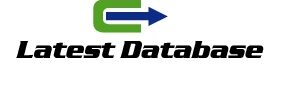After conducting the research, three distinct attitudinal segments emerged: independent, data-reliant and concerned respondents.
Independent respondents aren’t too worried about new policy legislation because their organization doesn’t use much third-party data. They already have systems to gather first-party data — like a crm — and know how to use it.
Data-reliant respondents believe data is the key to effective marketing and helps marketers weather change and take advantage of opportunities. Despite thinking it’s perfectly ethical to use third-party data, this group worries about their organization’s chance of success if it goes away.
Concerned respondents think it’s risky to use third-party data and believe the best prospect lists are developed in-house. They’re also concerned about the privacy of their data.
Both data reliant and concerned respondents are more likely
Than independent marketers to purchase data from other companies about their customers. Data-reliant are more likely than concerned marketers to say their organizations collect basic information about their customers.
You can collect a lot of customer data, including call notes, in-person visits to brick-and-mortar locations, and social media phone lists for sale engagement. Unfortunately, less than half of respondents say their organizations collect any of the above data. 68% say their organizations collect basic customer information like names and emails. Although this will only get you so far, all marketers need to increase their data collection in order to succeed in the future. And they need to know how to use it.
Most of our respondents use data to identify customers for sales and marketing purposes. Those tasks will be more successful if they have high quality, relevant data.
Even though third-party cookies will be on google chrome until 2024, start preparing for the change now by putting a better data management process together.
Start by making sure that all data is filled out correctly and in the right format
Bad data can be just as bad as having no CU Lists data. For example, if you send an email to a user and personalize it with the wrong name, it’s less. Likely to be opened or it can be deleted altogether. This can cause you to miss the sale and even the customer. Next, connect as many of your systems together as you can, and audit and verify your data at least twice a year.
By using a company-wide crm or implementing a customer. Data platform (cdp) that fits your industry, you can break those silos and start working together. This takes all data in, matches it with the appropriate user and then sends it to the different platforms. Cdps are also bidirectional, so if something changes in one place, it will change everywhere else.







